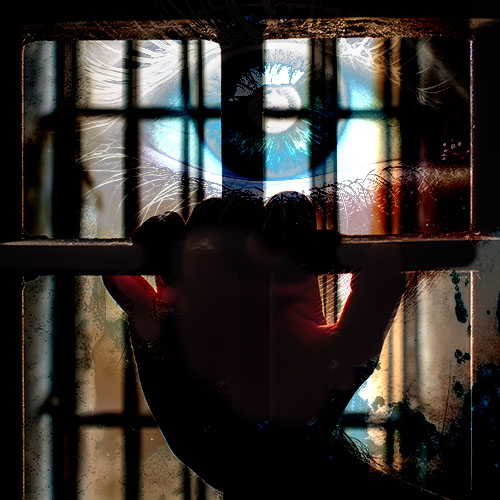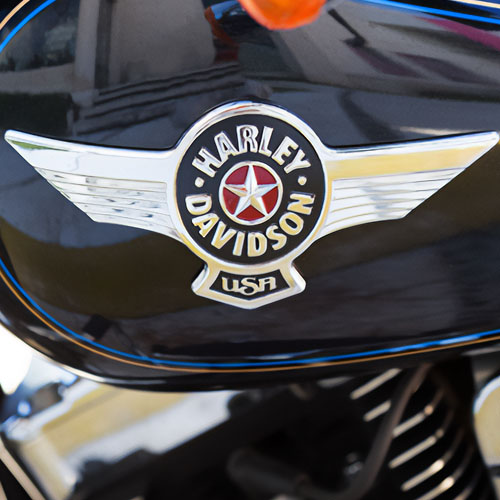At six tons of aerodynamically sleek brawn and muscle, it is the world’s most efficient killing machine. An unchallenged predator of the seven seas, it lurks silently in deadly packs in every major ocean. Imagine a being so powerful it can rip apart a great white shark in seconds, yet so benevolent it will allow a human to ride on its back.
It’s little wonder that American sea parks will do ·almost anything to capture and display the animal known as the killer whale. And nowhere, critics charge, is that more true than at Sea World, the $2.5 billion behemoth of the aquatic-theme-park industry.
Environmentalists are angry at Sea World, which has six parks, three in Florida and one each in California, Ohio, and Texas. In the wild, a killer whale might live for a century; at Sea World, it would be lucky to survive for a decade. Even more telling, between 1965 and 1988, 14 of Sea World’s fleet of 28 killer whales died. Orky, Sea World San Diego’s most famous killer whale, died in September 1988, just 18 months after being moved from Marineland, where he had lived for 16 years in relatively good health.
For years, there has been controversy surrounding the way Sea World operates. So many bad tidings about the company have leaked into the press that if Mickey Mouse were found to have a dark side, it would probably be revealed that he was secretly owned by Sea World.
Sea World has not been run by a zoological society or any other naturalist organization with a primary interest in keeping killer whales alive and thriving. No — surprisingly enough, its parent company is one of America’s largest book publishers, Harcourt Brace Jovanovich, which, critics charge, has been the driving force behind the sinking of the world’s largest fleet of killer whales in captivity. Although by the time you read this, H.B.J.’s ownership of Sea World will probably have come to an end, its misuse of one of nature’s noblest creatures is a sordid tale that will no doubt be repeated unless we take the necessary measures to prevent it.
As with most such stories, the wrongs that are perpetrated are shielded from public outrage by a cloak of secrecy. Thus, Sea World and other sea parks conduct much of their business as if they were international espionage organizations. And, in this case, it is only by traveling thousands of miles around the world that the secrets can be unraveled.
The chain starts in Japan, Iceland, and Brazil — and other countries that are willing to sell “their” killer whales — and ends with more than 20 million people throughout the globe paying an average of $7.50 each in gifts and $17 each in tickets to see killer whales such as Orky, who weighed a whopping 14,000 pounds, leap into the air and perform tricks.
In October 1987, the Icelandic herring trawler Gudrun headed into the frigid waters of the North Atlantic on what environmentalists say was a secret mission to capture killer whales for Sea World.
Sea World has had a major problem — over the past decade, it has repeatedly been denied permits to capture killer whales off the coasts of Iceland and Alaska. (Queried about Sea World’s participation, Ajartan Jaulisussen, chief of the Icelandic Fish Ministry’s whale division, later told The San Diego Union, “I believe they will be the eventual buyers.”)
Actually, Sea World appeared to be quite brazen about its presence. “AII their equipment was right.here on the boat, and there were Sea World signs everywhere,” Magnus Skarphedinsson, spokesman for the Whale Friends of Iceland and a friend of several Gudrun crew members, told Penthouse in a trans-atlantic phone interview after the hunt. The editor of an Icelandic newspaper also said that he had seen Sea World equipment aboard the Gudrun.
“Virtually every piece of equipment, including the slings that are used to carry the animals, were clearly marked S-E-A W-O-R-L-D,” added Skarphedinsson When asked to comment, Sea World declined.
During the foray, a brigade of environmentalists led by the Whale Friends say they uncovered an even bigger “catch” in Iceland: James E. Antrim and Donald Goldsberry.
As vice president and general curator, Jim Antrim is one of Sea World’s corporate executives. He is based at Sea World San Diego.
Don Goldsberry, called “a cattle rancher” of the sea in Erich Hoyt’s 1981 book, Orca: The Whale Called Killer, has probably participated in more orca hunts than anyone else alive today, capturing 19 of the 28 killer whales Sea World has held. Sea World’s most recent official description of Goldsberry — according to Hoyt, a July 10, 1987, application for a permit to move a killer whale — cites him as Sea World’s corporate director of collecting, with “29 years of experience with marine mammals.” By the early 1970’s, he’d caught “more than 50 percent of the killer whales removed from the wild and sent to the world’s aquariums.”
Whatever the case, environmentalists weren’t the only ones to see Antrim and Goldsberry in Iceland. The Gudrun’s skipper told San Diego Union reporters Nancy Cleeland and Jim Okerblom that he spoke “at length” with Goldsberry before he left the Icelandic port of Seydisfjordur on board the Gudrun. The manager of the hotel in Seydisfjordur revealed to the Union that both Goldsberry and Antrim “were in town during the capture.”
‘Tears were streaming down the faces of the Marineland trainers as Corky struggled for 45 minutes before she finally relented.’
In an even more startling revelation, the wife of the president of FAUNA, the Icelandic firm whose name appears on the permits issued by the Icelandic Fish Ministry, disclosed that her husband had also been talking to Sea World employees. And the London Daily Mirror reported that the man who would be training the captured orcas while they remained in Iceland was none other than “former Sea World employee Jeffrey Foster, 32, who also goes by the name of Jim Jeffries.”
Why would an American company want to be involved in something requiring so much hassle? According to Hoyt, the answer was found 25 years ago off the waters of Canada. Nobody ever intended to “use” a killer whale, but it happened just the same. Back in 1964, a 38-year-old sculptor named Samuel Burich was hired by the Vancouver Aquarium to kill a killer whale and make a life-size model of it for an exhibit.
The problem was that when Burich fired a harpoon from the shore into a passing killer whale, the animal did not die. When two rifle shots also did not kill the creature, Burich and his assistant did the next best thing: They hauled the animal, still dragging the harpoon, back to Vancouver.
Thousands of people lined the shore to gasp at the sight of the world’s first captive killer whale. Eighty-five days later, Moby Doll, as she was called, died what the Victoria Times labeled “a miserable death — unable to reach the clean saltwater that was its natural habitat.” An autopsy later showed that even the naming of Moby had been misguided: The Doll, in fact, was a Dick.
However, the capture of Moby Doll proved a point: Thousands of people will turn out to see a live killer whale. It’s a discovery Sea World has never forgotten.
In Iceland, fishermen on the Gudrun eventually captured four orcas that activists believed were destined for Sea World. They charged that Sea World had planned to swap the captured areas for three others in captivity in Canada to avoid import restrictions, and then scrubbed the project under pressure from environmentalists. During the ensuing controversy, and after being interviewed by several journalists, Don Goldsberry and Jim Antrim quickly returned to the U.S. Later, Antrim claimed his presence in Iceland had been purely coincidental — the whole thing, he contended, was just a big misunderstanding. “I was in Iceland on a census photo survey,” he said at the time. “It had nothing to do with [the orca hunt].”
Sea World representatives tried to explain Goldsberry’s presence the same way. On October 16, 1987, an A.P. story reported that Jackie Hill, public relations chief of the San Diego park, stated that Goldsberry was with Antrim in eastern Iceland to gather data. “We are not collecting killer whales for any Sea World park,” she said. “We are taking photographic surveys of whales all over the world.”
Jim Lecky, who has monitored Sea World permits for the National Marine Fisheries Service in Los Angeles, says the N.M.FS. didn’t investigate the Iceland incident: “We didn’t actually look into it because there was no cause to initiate an investigation.” While Sea World would need a U.S. permit to bring a whale into U.S. waters, it did not need one to capture whales in Iceland.
The N.M.FS., which lacks sufficient manpower to deal with many problems, enjoys a close working relationship with Sea World. In fact, in the early seventies, following the passage of the Marine Mammal Protection Act, N.M.FS. approved — without holding a public hearing — an “economic hardship” permit for Sea World San Diego to capture 80 animals to stock its new facility in Orlando. The animals, which included dolphins, whales, and seals, were used for such “educational” shows as a “going to Hollywood” skit, in which they donned sunglasses and swam across the pool. Says Lecky, “Sea World’s a pretty sharp outfit. They’ve been real helpful to us.”
Aboard the Gudrun, they told a different story. “The captain told members of the crew that Sea World was very angry that anybody [outside the ship] had found out about the Sea World equipment and [Antrim and Goldsberry’s presence],” says Skarphedinsson of the Whale Friends. “He also said Sea World was rushing them home.”
A few months later, in December 1987, George Becker, Jr., now in charge of Sea World Texas, disclosed that Goldsberry was, no longer working for the organization.
Apparently, Sea World’s wrath was short-lived. Today, Jim Antrim is still vice president and, according to Icelandic sources, Don Goldsberry is still associated with Sea World in a “freelance capacity.” When asked to answer further questions about the matter, Sea World declined.
It’s not just Iceland that Sea World refuses to discuss. The company refused more than a dozen requests to participate in this article, saying through its public relations spokesman Dan LeBlanc, “Greenpeace has 800,000 members. This year, 11 million people will see our killer whales. What you have here are the views of a couple of people versus the views of most of the country. Even for an article to come out 50-50 (50 percent comments from aquariums, 50 percent from critics] frustrates us. These people [the critics] aren’t experts; they’re just some people with opinions.”
Some of Sea World’s strongest critics, however, aren’t activists at all. They’re residents of one of America’s most conservative communities: Rancho Palos Verdes, California. The controversy started on January 20, 1987, when Sea World acquired two killer whales after it purchased and (after publicly insisting that it would never do so) closed down Marineland, a Southern California competitor there. Then it shipped the Marineland animals, including Orky and his mate, Corky, to the various Sea World parks.
Within a year, 12 of the Marineland animals — five dolphins, five sea lions, and two seals — were dead, some within weeks, according to marine-mammal inventory reports from the N.M.F.S. On September 26, 1988, Orky, who had been the world’s most famous killer whale, was also dead. According to the same reports, 12 other marine mammals, including a killer whale, died at other Sea World facilities in 1987.
Today, Mel Hughes — mayor of Rancho Palos Verdes during the Sea World episode — and other officials are still furious about what happened there. “Sea World lied to us over and over again,” Hughes says. “It got so bad, it was almost a joke. If they told us one thing, we automatically expected the opposite to happen.”
“It’s an almost unbelievable story,” says Nina Easton, who covered the saga for the Los Angeles Times. According to Cleveland Amory, president of the Fund for Animals, “What Sea World did in Palos Verdes was dastardly.”
In the months before the Gudrun set sail and H.B.J. purchased Marineland, H.B.J. Chairman William Jovanovich reportedly was extremely worried about whether Sea World would have enough killer whales to open the company’s new park in Texas, which Jovanovich had personally designed.
Unidentified sources later told Jim Okerblom of The San Diego Union that Jovanovich “repeatedly threatened corporate officials with a shutdown of the Ohio Sea World” if the company wasn’t able to acquire more orcas. This created what Okerblom calls “a high-pressure atmosphere” for Sea World executives.
It was this pressure that apparently led Sea World to take an unprecedented action when it set out to purchase the “stars” of a competing sea park. Unfortunately, the company didn’t have many places to turn. It already had almost all the killer whales in captivity in the U.S., with four exceptions: one orca at Marine World/Africa U.S.A. in Vallejo, California; one at the Miami Seaquarium; and the two at Marineland.
In 1986, Sea World approached Marineland’s general manager John Corcoran about selling Orky and Corky, according to his friend Doug Hinchliffe. “I had calls on a fairly regular basis [from Sea World],” Corcoran recently told a source familiar with the episode. Corcoran won’t confirm who approached him, but other sources say it was Lanny Cornell, who served as Sea World’s zoological director.
At first, Corcoran couldn’t believe what he was hearing. “I never encouraged them,” he told the source. Hinchliffe, who was mayor of Rancho Palos Verdes before Mel Hughes, remembers that “John understood that without the whales, he would not have a viable park.”
When Sea World began throwing out purchase offers of $1 to $2 million, Corcoran told the company that he wasn’t interested in selling. “Selling Orky and Corky would have. been like ’The Tonight Show’ selling Johnny Carson,” he told the source. “You don’t sell your major attraction and then expect to operate successfully.”
Furthermore, Corcoran told Hinchliffe that Marineland’s Hong Kong - based owner, Far East Hotel & Entertainment Ltd., also didn’t want to sell the park’s killer whales. “So,” recalls Hinchliffe, who is now a city councilman, “[Corcoran] believed H.B.J. was wasting its time, and they weren’t going to get anywhere.”
Yet H.B.J. persisted. For years, with only limited success, Sea World had been trying to get a successful breeding program off the ground. Insiders knew that once it established a herd of viable breeding orcas, the company wouldn’t have to rely on hunts in Iceland to replenish its stock. It also hoped that Orky, a prize bull who had sired six calves, none of which had survived, might be coaxed into becoming the first cog in such a program.
According to Hinchliffe, in September 1986, three “real estate types” started sniffing around Rancho Palos Verdes city hall. “They didn’t say they were from Sea World, and they didn’t say they were from H.B.J., but it didn’t take long to figure out what was going on,” says the ex-mayor. They began asking planners how Marineland was zoned. “Could we build homes there?” one of them asked. “What other kinds of activities is it zoned for?” another wondered.
Hinchliffe panicked and immediately called Corcoran. Not only did Marineland provide the city with a tax income, but it also employed several hundred residents. “Are you up for sale?” he asked the manager, who quickly denied there had been any inquiries.
Three months later, Corcoran got the shock of his life when he learned Sea World had gone over his head and convinced Warwick International, which owns Far East Hotel, to sell Marineland to H.B.J. In effect. H.B.J. had purchased a single breeding killer whale – Orky - for the price of the park: a mind-boggling $23.4 million. (Later Jovanovich’s son Peter, executive vice president of H.B.J., denied the charge. “Orky and Corky are not young,” he told The Daily Breeze in nearby Torrance. “So, the idea of buying (Marineland] just for the whales just doesn’t make any sense.”) On December 26, Warwick announced the sale to its top management. Hinchliffe and Hughes, who was just about to take office as mayor, got the news a few days later in the morning papers.
Stunned as they were by the sale, not everyone at Marineland was displeased. The 33-year-old park’s facilities were desperately in need of a financial injection, and the morale of its employees was buoyed when H.B.J. met with the staff and said that it planned to make $750,000 in improvements at Marrneland. Even Corcoran tried to keep up a good front. “Maybe now we can get the kind of money we need,” he told his workers.
Looking back, Doug Hinchliffe says, “Even then, I honestly don’t believe they had any intention of keeping the park open.” He may have been right. Unbeknownst to the Marineland employees, Sea World began making plans almost immediately to move Orky and Corky to San Diego.
On January 12, 1987, just 13 days after the first accounts of the sale appeared in the press, H.B.J. issued a memo saying the killer-whale stadium would be closed for construction on January 20. That work never occurred. Instead, on the same day H.B.J. was issuing its memo, Sea World was secretly setting into motion its plan to move Marineland’s killer whales. “On January 12, I got a call from Bob Lewis [of California Crane & Rigging Service, Chula Vista, California], asking us to have a crane ready to move the whales on January 20,” says Craig Switzer, a salesman with Bragg Crane Co., in Long Beach. According to Switzer, Lewis made the call at the request of Sea World.
The move would not be an ordinary one. Roads would have to be closed and permits would have to be obtained so the caravan of trucks from Marineland could use several lanes of the highway. Loading the whales onto the flatbeds alone required a massive effort. Switzer’s team would arrive at midnight to lift the orcas up with what was at the time the state’s largest rubberwheeled crane, a gargantuan 250-ton device designed by Bragg.
H.B.J. insisted the late-night transfer was necessary because of the width of the trucks, but critics later argued that it was a strategy to keep the move secret. But until January 19, nobody at Marineland even knew any such change was afoot. On that day, H.8.J. told a few key Marineland employees that the park would be closed and the whales moved on the next day. They were ordered not to tell anyone about the transfer; if they did, H.B.J. said they would be fired. Switzer says his men were specifically ordered not “to talk to the press.”
Still, news of the move spread like wildfire through the coastal community. Etched as it is onto the peninsula that juts out of the sprawling Los Angeles basin, Rancho Palos Verdes had grown up around the sea park. It was impossible to think of Palos Verdes without thinking of Marineland. “It was such an emotional scene, I’ll never forget it,” remembers Switzer: as park employees stood shuddering in the eerie darkness, watching his men slide an uncomplaining Orky onto a sling. Tears were streaming down the faces of Marineland trainers as Corky struggled for 45 minutes before she too finally relented and was saddled onto the stretcher.
From this point on, one broken promise followed another. H.B.J. kept repeating that there were no plans to close the park. In a meeting attended by a dozen city officials, H.B.J. representatives insisted they would add a new show and expand Marineland. “They told us it would star two pilot whales,” recalls Hughes.
Then, in rapid succession, the city council passed a resolution stating that if H.B.J. closed the park, it would have to tear down any property within two years; William Jovanovich, in a telex, ordered the park to close on March 1; and H.B.J. issued a press release saying that it had moved Orky and Corky “to assure their ongoing safety and wellbeing” because Marineland’s 650,000- gallon killer-whale pool was too small.
As witnesses gasped in horror, a killer whale repeatedly dragged Smith 32-feet underwater to the bottom of the pool.
It soon became clear that H.B.J. had I no intention of keeping the park open until March 1. Without warning on February 4, the ten employees of Marineland’s marketing division were ordered to leave the park. Security guards searched cars to ensure that no Marineland property was taken off the grounds. Just as suddenly, on February 11, the park’s few remaining workers were ordered to a meeting ringed by more security guards and told that Sea World planned to take care of them, that it would help them get new jobs.
Two hours later, H.B.J. announced that the park would close that day. Sea World officials blamed the closure on three bomb threats they claimed to have received. But Hughes says he checked this story with police. “The police knew nothing [about it],” he says. “Sea World created those phony bomb scares in order to have an excuse to close down Marineland.” Nina Easton also reported in the Los Angeles Times that “the police received no notice of a bomb threat at Marineland that week.”
Sea World justifies its purchase and exhibiting of killer whales as “education.” “We believe we have done the public a service by bringing about a higher level of appreciation, which in turn brings about protective legislation,” Jim Antrim told The San Diego Union in 1988.
Although Stefani Hewlett, staff biologist at the Vancouver Aquarium at the time, chides Sea World for its “circus-like atmosphere,” she agrees with Antrim’s point. “Reading about an animal is very different from seeing one up close. To really appreciate it, you have to see it with your own eyes, smell it with your own nose, and hear it with your own ears.”
Critics disagree. “There’s nothing educational about it,” argues Ben White, Atlantic director of the Sea Shepherd Conservation Society. “Even the name they use is wrong — orcas aren’t whales, they’re dolphins.”
Still, the real reason for displaying killer whales is money. “I can’t sell [tickets to see] a sea squirt,” says Hewlett. “Nobody gives a damn. It’s not pretty or sexy, and it won’t produce a cure for cancer. But people sure care about whales. They want to see the megamammals. The main reason most firsttime visitors come to parks like ours is to see our killer whales.”
And come they do to Sea World. According to company statements, nine million visitors spent $225 million at Sea World in 1986. Of that, $45 million was profit. During the same year, the parks accounted for 28 percent of H.B.J.’s profits. In 1987, Sea World California drew a record 3.7 million visitors to become the nation’s sixth-most popular amusement park.
In 1988, Sea World increased its admission price by $2 to $19.95 for adults and by $3 to $14.95 for children. But visitors spend even more in the park shops — buying gifts such as coffee mugs, wine glasses, and beach towels, all emblazoned with killer whales — than they do at the box office.
Sea World is now more valuable than ever to cash-starved H.B.J., which rang up a debt of $2.7 billion and sold off its magazine and school-supply operations to battle a 1987 takeover bid. Still stinging from its earlier problems, H.B.J. lost another $53.5 million in 1988.
The bottom line: In terms of assets, H.B.J. is the 439th-largest company in the U.S., and last year Sea World accounted for 77 percent of its $3.2 billion in assets. According to analysts, offering the parks for sale now seems a significant admission of the company’s difficult financial position.
Even so, the ticket sales, coffee mugs, and real estate holdings are just part of the Sea World story. If you’re looking for a sure investment, forget gold, stocks, or money-market funds. The inflation that has occurred in the killer-whale market will astound you. Even Midas would be impressed. In fact, at $400 or so per ounce, young killer whales are literally worth their weight in gold.
When killer whales are captured or acquired, profits are made at every stage of the proceedings. But despite the hype of killer-whale T-shirts and cups, the hoopla of huge public relations efforts, and the “happy” look of the killer whales — which, because of the shape of their mouths, appear to be perpetually smiling — the orcas themselves often face grim futures. Many environmentalists suggest that two possible causes of dolphin mortality are stress and food deprivation.
“Captive orcas are so stressed-out you wouldn’t believe it,” says Richard “Ric” O’Barry, trainer of the five animals used in the TV series “Flipper.” “My guess is that more than 60 percent of the killer whales now in captivity in the U.S. have ulcers.”
One of the world’s most renowned killer-whale experts, Paul Spong, head of Canada’s Save the Whales organization, explains, “The world of the orca is full of sound. The sea is a wonderful world for the orca, which operates entirely on acoustics.” Take away that sound and you have an animal that’s essentially undergoing sensory deprivation, contends Spong.
Other aspects of captivity also drive areas crazy. “Putting an orca in a halfmillion cubic-foot tank is like making a person live in a closet,” says Sea Shepherd ’s president Scott Trimingham. “Don’t forget that we’re talking about an animal that may travel 100 miles a day. Can you imagine what being restricted to a tank will do to an orca?”
“It’s not the size of the space that counts,” says Vancouver’s Hewlett. “It’s making the area more interesting — It’s the quality of space. What orcas want is variety.”
Originating at Marineland of Florida in 1938, the practice of withholding food from “problem” animals has spread to most sea parks. On weekends, the system is sometimes applied even to killer whales that are performing well. Some parks withhold 50 to 60 percent of their food before shows so the animals will be “sharp” for their performances.
“Virtually everyone in the industry withholds food,” reports O’Barry. Sonny Allen of Marine World/Africa U.S.A. acknowledges that he knows of trainers at other parks who withhold food. “Yes, it’s going on,” he says, “but it’s not right.” Allen’s estimate: Trainers commonly withhold two-thirds of the food of killer whales that aren’t performing properly.
The Miami Seaquarium, one of the few parks that admits withholding food from killer whales and dolphins, says its use of the technique is rare. Sea World has in the past denied using food deprivation.
Unfortunately, the feeding practices at U.S. sea parks have yet to be investigated. The findings might be astonishing. Even well-treated areas seem affected by the punishment of their peers. Killer whales are very emotional creatures that, if treated harshly, tend to sulk first and then get mad. But they’re also highly intelligent.
Former killer-whale trainer Mike Hyman likes to tell the story of a captive female orca that was deprived of food for not performing well. “The trainers fed the male while the female floated in the corner of the tank, sulking,” he wrote to Cleveland Amory. “The male took his fish and ate them while carefully eyeing the female. After a few minutes he took one fish, swam over to the female, and gave it to her.”
In 1965, when Namu was captured off the coast of Canada, he was towed to the Seattle Public Aquarium in a steel cage that was followed for miles by wild orcas. Could they have been trying to free him? If so, this case would support experts’ other observations of orcas seemingly trying to help other areas in trouble.
“Sea World lied to us over and over again,” said the mayor. “It got so bad it was almost a joke.”
Former Sea World trainers have also reported that they were ordered to administer oral drugs to animals without knowing what they were, to spray paint the stump of a whale’s amputated dorsal fin to make it appear normal, and to shake a dead whale on a stretcher to make it look as though the animal was still moving, according to Arthur “Bud” Krames, a onetime Sea World trainer who was injured in an accident in 1984. “I left because I didn’t agree with the system,” he says.
In addition, Sea World’s practice of transferring animals from one park to another may have contributed to their high mortality rate. “We’re seeing animals transported much more frequently [by Sea World] than we do [at] other marine parks,” says Sally Mackler of Animal Advocates. “Marine animals are very sensitive to transports.” David Bain, author of a 1987 University of California study showing that dolphins at other sea parks have a survival rate three times longer than those at Sea World, in part attributes this finding to Sea World’s dismal record of frequently relocating its animals.
Far from being contrite, however, Sea World is proud of these techniques. “We pioneered techniques in “moving marine mammals,” Jim Antrim gloated during a 1988 interview. But Sea World officials might have to admit that some of their techniques for dealing with their human staff are a bit less smooth.
Tell that to former Sea World trainer Jonathan Smith and he might agree. On March 4, 1987, a killer whale stunned an audience of 7,000 people by apparently trying to drown Smith at Sea World San Diego. Worse still — as eyewitnesses, one of whom filmed the entire scene, gasped in horror — a second orca joined in the frenzy, repeatedly dragging Smith 32-feet underwater to the bottom of the pool. The near tragedy ended when an orca spit him out of its jaws — Jonah-like. Later, then head trainer David Butcher said, “These guys were playing and got a little carried away and bumped into Jon.”
Just three months after Smith, 21, was sent to the hospital with a ruptured kidney, lacerated liver, and cuts all over his torso, another Sea World trainer, Joanne Webber, was injured. So were Chris Barlow, 24, who had to be hospitalized after an orca rammed him during a show, and Mark McHugh, who was bitten on the hand while feeding one of the whales.
Then, in November 1987, John Sillick, 26, was severely injured while riding an area when another animal leapt from the water and landed on him. Sea World trainers continued the show and later gave the orca that had landed on Sillick’s back a pail of fish. “To reward the area was just outrageous,” says Jerye Mooney of the Fund for Animals.
At first, Sea World blamed this accident on “a timing problem.” But the firm’s own fact-finding committee later reported that three of the four trainers in the pool with Sillick had only three months or less experience actually working with orcas. “There was negligence,” admitted William Jovanovich. The trainers, he added, “had such meager training it was a wonder they could even perform the most elementary aspects of their positions.”
In Smith’s case, he had even told his employers that he didn’t want to take part in the show. In 1985, at the age of 19, the business major at San Diego’s Point Loma Nazarene College was hired for $5.05 an hour as a trainer in the seal show. According to Smith, after a year he was moved to the orca show and, just a week later, told to get into the water with the whales. Today, Smith, Webber, and Sillick are suing Sea World. Smith’s suit alleges that Sea World officials concealed the “danergous propensities of killer whales” from him and assured him that it was safe to participate in the shows although he had no formal training. The suit also charges fraud, battery, and the infliction of emotional distress, claiming that after the episode — which left Smith hospitalized with bruised kidneys and ribs, and a six-inch cut on his liver — park officials attempted to prevent the public from learning what had occurred, causing a delay in medical attention. Webber’s suit claims similar charges after injuries suffered during a practice session, when a whale leapt into the air and landed on her, fracturing her neck and pushing her to the bottom of a 40-foot pool. Despite a fractured vertebra, Webber was able to get out of the pool after the attack. After being asked to remove the wet suit, Webber has claimed she was told to dress and walk 200 yards to a waiting ambulance. Her injuries were aggravated, the suit alleges, by Sea World personnel who delayed treatment by insisting that her wet suit be removed at the park so that it would not be damaged at the hospital.
In the wake of these incidents, as well as the botched Icelandic expedition, heads have been rolling at Sea World. In November 1987, the company fired three key figures: David Butcher, Lanny Cornell — the same Lanny Cornell who. sources said engineered the Marineland takeover — and, the biggest surprise of all, Jan Schultz, president of Sea World San Diego.
A few weeks later, William Jovanovich did something he’d never done before: He publicly lambasted his employees. During a surprise press conference, he announced his firing of the executives for allegedly nortelling him the full truth behind the spate of accidents. “I had no knowledge — that procedures for training had deteriorated so badly,” Jovanovich said, adding, “in my view, human beings should never again enter the [killer-whale] pool.” The San Diego Union’s report conflicted with Jovanovich’s version of the firings, however, saying that Cornell’s preference (Mooney and others believe Cornell was also the major figure behind the Icelandic expedition) for the slow approach of “getting permits — reportedly further irritated Jovanovich.”
Outside the company, the mood was even more somber. And as the shocking, often-secret story about what has really been going on at Sea World continues to unravel, Jovanovich’s “November Massacre” looms as perhaps only the tip of the proverbial iceberg.
By July 1988, another local paper, The San Diego Tribune, was reporting that Sea World’s operations had “been engulfed in turmoil” for 18 straight months. On July 25, 1988, H.B.J. announced some more shake-ups: William Davis would replace Jack Snyder, who had managed Sea World’s Orlando park, with Davis to be replaced as head of Sea World in Aurora, Ohio, by J. William Rooks. And, for the first time, the heads of all the Sea World parks would report to Peter Jovanovich.
As a result of these changes, Sea World operates with a full shift in leadership at three of its six parks as well as increased centralization under its parent company, presumably to ensure fewer failed expeditions, fewer trainer injuries, and, most important from the company’s point of view, fewer public embarrassments.
But it’s not only Sea World executives who have been leaving the company. In the year after his own injury, Bud Krames, now president of the International Marine Animal Trainers Association, estimates that 35 trainers left the San Diego park. During his news conference, Jovanovich blamed the exodus on disagreements between trainers and chief trainer Butcher. And in a letter to employees, Bob Gault, Sea World San Diego’s new president, shrugged off the problems, saying, “Considering the 25-year history of Sea World, these last few months represent a relatively short time.”
William Jovanovich’s statement that trainers should never enter Sea World’s killer-whale pool was apparently just his personal opinion. Exactly six months later, in May 1988, Sea World announced it would allow its people back in the water under a new program that, according to San Diego’s chief trainer, Michael Scarpuzzi, teaches animals to ignore the trainer in the water and pay more attention to the main trainer on the stage.
Despite Sea World’s attempts at reform, its problems may be only beginning. At press time, the N.M.F.S. disclosed that Sea World may face an investigation into the death of Orky. Sea World officials have blamed the death of the bull orca on an “advanced geriatric condition.”
How long killer whales live is the subject of great debate. Experts like Paul Spong and Greenpeace co-founder Paul Watson believe female orcas live for up to 100 years in the wild and males for 75 years. Michael Bigg, another renowned orca scientist, believes the top age of wild orcas is 50 years for males and 70 years for females. In contrast, Sea World’s guidebook maintains that “killer whales live an average of 30 to 35 years.” Orky is thought to have been between 27 and 32 years old.
But what really irks activists is Orky’s fate during his 18-month stay at Sea World after 16 years of relatively good health at Marineland. Though long known as a “problem animal,” by all accounts Orky’s behavior turned more aggressive at Sea World.
According to Sea World records, before his death Orky lost more than 4,000 pounds, or almost a third of his body weight. Sea World’s necropsy report - dated September 26, 1988, but actually received by the N.M.F.S. in December — claims that Orky died of “acute pneumonia which was caused by diminished immune competence with chronic wasting.” Former Marineland assistant curator Tim Desmond says he was told by a Sea World official that “Orky was fed the normal amount, but he had a health problem that caused him not to absorb food properly.”
Critics suspect otherwise. “We are disturbed that a large, healthy animal, under constant supervision by experienced personnel, could lose more than 4,000 pounds in such a comparatively short time,” wrote Craig Van Note, executive vice president of Monitor, an animal-rights group, in a March 8, 1989, letter to the N.M.F.S. “It has been suggested that food deprivation may be employed as a training technique for the killer whales and other marine mammals at Sea World.”
“People forget that animals habituate,” says Stefani Hewlett. “Here was an animal that had lived at Marineland for a very long time. Any kind of move would have been stressful. But whether that had anything to do with that animal’s demise — who’s to know?” She calls the starvation charge “rubbish” and asks, “Why would they want to starve him?”
But what can be done to save other orcas? Says Ric O’Barry of “Flipper,” “It’s time to set all the captive orcas free.” O’Barry’s plan to release killer whales back into the sea involves setting up a “halfway house” for orcas in a penned-off portion of a bay. Orcas taken there would spend six months learning to readapt to the wild.
O’Barry knows what he’s talking about. Before the Marine Mammal Protection Act was passed, he released three captive dolphins into the wild, and in July 1987, he and five others untied the gates of a pen on a Georgia island where two dolphins had been undergoing “deprogramming” for 28 days.
Their names were Joe and Rosie, and they had become a cause celebre for such stars as Kris Kristofferson and Olivia Newton-John. Named after Joseph E. Levine, who produced The Day of the Dolphin, and his wife Rosalie, the two dolphins had been used in communication experiments.
Incredibly, the greatest obstacle O’Barry faced was in getting the N.M.F.S. to go along with the release. Nobody had ever applied for a permit to return dolphins to the wild before; it took one and a half years to get one.
The gates slid open, and Joe and Rosie barreled out of the pen in a straight line. “It was fantastic,” remembers O’Barry. “They were leaping and stretching. It was like Born Free, only these were dolphins.”
O’Barry’s friends spotted the pair on the open sea as recently as September 1988. “Now’s the time to apply the same plan to orcas,” says O’Barry. “Only this time, instead of just a few animals, let’s set them all free.”


























